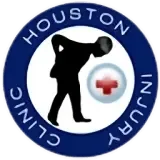How do orthopedic doctors treat Arthritis of the Shoulder?
Arthritis of the shoulder is treated with medications, physical therapy, injections, cortisone shots, surgery, and joint replacement. The causes of the injury can be congenital or traumatic. Most frequently, it results from a dislocation or fracture. Treatment depends on the severity and type of arthritis. Many orthopedic doctors treat knee pain by diagnosing the cause of the pain and prescribing an exercise program. The orthopedic doctor may prescribe rest, anti-inflammatory medications, a brace, or surgery, depending on the condition.

